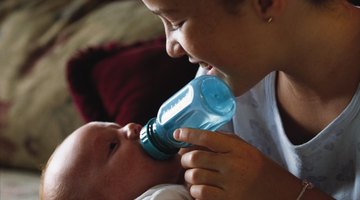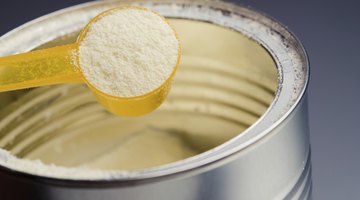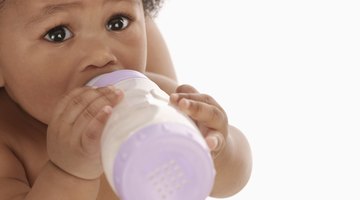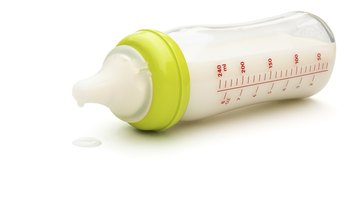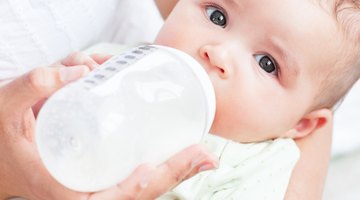Is it Harmful to a Baby to Keep Changing Formulas?
Parents often worry about switching their baby's formula -- even if they have a valid reason for doing so. They may worry that the baby will get gassy or will not tolerate a new formula. In most cases, switching formulas doesn't harm your baby. You can switch from brand name to generic brands, or change formula types, like going from dairy-based to lactose-free formula, without worry.
Safety Issue
Generally it is safe to switch your baby’s formula as often as you want as long as you are not switching the type of formula. For example, you might safely switch from one brand of dairy-based formula to another brand. Moms often buy different brands depending on sales or coupons to help manage the cost of infant formula. While not harmful, different brands may vary slightly in taste. As a result, your baby may initially balk at the change in taste, but should adjust in no time.
Benefits of Switching

How to Switch Baby Formulas
Learn More
In some cases, it is actually better for your baby to switch formulas for health reasons. Different types of formula address certain food intolerances or allergies and may alleviate health problems caused by your current formula, such as excessive spit up, diarrhea, constipation, fatigue, rash or other formula reaction signs.cause:
- Different types of formula address certain food intolerances or allergies
- may alleviate health problems caused by your current formula
- such as excessive spit up
- diarrhea
- constipation
- fatigue
- rash or other formula reaction signs
You will need a specific formula if your baby is lactose intolerant, has a milk-protein allergy or suffers from galactosemia -- a rare disorder. It can harm your baby if you switch types of formula when your baby needs a specific type such as soy-based, low-lactose or hypoallergenic formula.
Gradual Transition
You can make the change to a new formula easier on your baby by always making the switch a gradual one. Always offer the new formula in stages. Increase the ratios every two days. Start by mixing a bottle with 1/4 of the new formula with 3/4 of the old formula, then mix 1/2 of the new formula with 1/2 of the old formula a couple of days later. Finally, mix a bottle with 3/4 of the new formula with 1/4 of the old formula. At this point, your baby should be used to the new formula and won't require you to mix old and new.
Mixing Formulas
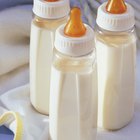
Does It Affect a Baby When You Change Formula Brands?
Learn More
Some moms come up with their own formula blends by experimenting with formulas and mixing them regularly. For example, you could mix a name brand formula with a generic department store formula to reduce costs. You could mix organic formula with non-organic formula if you think your baby tolerates a blend better than non-organic or organic formulas alone.
Related Articles
- Seattle Children’s Hospital: Mix and Match – Goldilocks Formula
- FamilyDoctor.org: Infant Formula
- U.S. Department of Agriculture: Chapter 4 – Infant Formula Feeding
- WebMD: Your Guide to Bottle Feeding
- PR Newswire: New Clinical Research Shows Need for Baby Formula Education
- St. Louis Children’s Hospital: Breaking Down Baby Formula
- BabyCenter: Can I Switch Formula Brands and If So, How Do I Ease the Transition?


